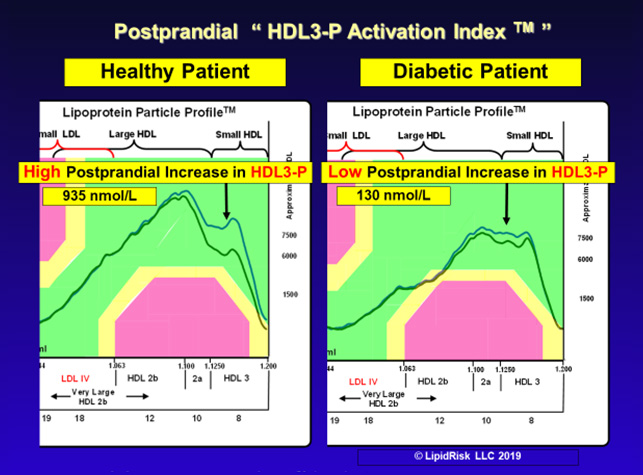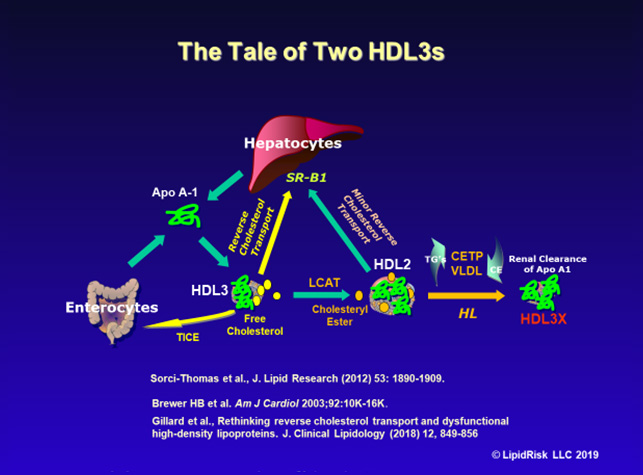HDL3-P Activation Index Summary

HDL3 particles (HDL3-P) are the smallest fully formed HDL particles. Hepatocytes and enterocytes produce the most important protein of HDL, Apo A-1. Apo-A1 collects phospholipids and a small amount of unesterified cholesterol to form a nascent Pre β-1 HDL. The Pre β-1 particles rapidly gather free cholesterol to become fully formed HDL3 particles.
Read More
Patent
Slides
HDL3-P Activation

HDL3 particles (HDL3-P) are the smallest fully formed HDL particles. Hepatocytes and enterocytes produce the most important protein of HDL, Apo A-1. Apo-A1 collects phospholipids and a small amount of unesterified cholesterol to form a nascent Pre β-1 HDL. The Pre β-1 particles rapidly gather free cholesterol to become fully formed HDL3 particles.
Read More
HDL3 Activation Assay

I have previously posted a summary of the “HDL3-P Activation Index” assay and a description of Reverse Cholesterol Transport (RCT) showing HDL3-P as a primary contributor to the RCT process. Additionally, HDL3-P provides anti-inflammatory and antioxidant protection to LDL most likely from paraoxonase-1.
Read More
Slides
HDL3 Particle Activation for CVD and Poor Diet

The observation that small HDL particles (HDL3-P) are produced immediately on the consumption of protein is important in the functionality of HDL. There are many markers known today for CVD risk but, since HDL3-P is the primary player in reverse cholesterol transport (RCT) it has promise as a leader.
Read More
Postprandial HDL3-P Activation after a High Protein Drink

Consumption of protein stimulates, in a time dependent manner, the posprandial production of Apo A1 and HDL3 particle production. This HDL3 particle activation can be measured as the difference between fasting and postprandial specimens.
Read More
A Nonconventional Long-term Treatment of Cardiovascular Disease

A treatment to reduce the inflammation of calcified and micro-calcified plaque by providing an anti-inflammatory response at the exact location of the inflammation. The non-steroid gallium compound treatment incorporates into the lesion and provides anti-inflammatory activity that can last for months
Read More
Patent
Slides
The Tale of Two HDL3s

Scholarly articles suggest that either high or low HDL3-C/HDL3-P is atherogenic creating uncertainty on the functionality of HDL3. Recent articles have also focused on the importance of HDL3 over HDL2 in reverse cholesterol transport (RCT), anti-oxidant and cardioprotective function. HDL3 is usually identified by analytical methods measuring either size or density and two types of HDL3 have been identified with the same size and density.
Read More
Gallium treatment for concussion and traumatic brain injury

Gallium compounds, which are non-steroids, have been studied for various cancer treatments in animals and humans and found to be effective in a number of trials. In fact, the use of gallium nitrate (GN) is FDA approved for the treatment of hypercalcemia (bone calcium loss) in cancer patients. Also, the anti-inflammatory and neuropathic pain blocking properties of gallium compounds have been studied and are relevant to the treatment of TBI.
Read More
Patent
Slides